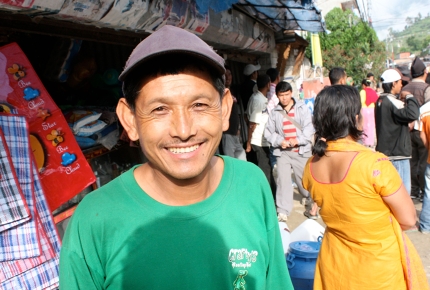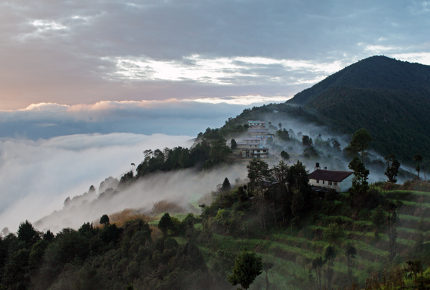Sangram’s story: Surviving Nepal's earthquake
A Nepalese tour guide recounts his experience of the April earthquakes and tells James Hendicott how residents are coping in the aftermath.
I first met Sangram Lama in Kathmandu’s Durbar Square. That was in 2009, when the squat and good-humoured hiking guide was in the city picking up custom. He took me across the Langtang valley for 10 days, climbing above 5,000m (16,404ft) for yak photos and glacial views.
Late nights were spent steamed on local liquor and we formed a firm friendship around the campfire. Six years on, that same valley was obliterated in landslides caused by the Gorkha earthquakes. Langtang, Sangram's hometown, was razed to the ground and 80% of its residents killed.
When I heard the news, I had no idea if Sangram had survived. After weeks of unanswered emails, I was provided with shaky reassurance via Facebook’s ‘marked safe’ function.
 Sangram back in 2009
Sangram back in 2009James Hendicott
Fortunately for Sangram, when the 7.8 earthquake rattled the Richter scale on 25 April 2015, he was out of town, hawking for business in the same spot I’d first met him. He had dived out of the way of falling temples as Durbar Square turned to dust around him.
“Beautiful Langtang is gone,” he told me when we finally made contact. “It’s a wilderness now. It’s devastated.”
It took Sangram days to navigate the roads home to Kavrenpalanchok, around 40km (25 miles) southeast of Kathmandu, all the while unsure if his family had made it.
His family survived, escaping with scratches from falling debris, but his home sadly didn’t.
Sangram, his wife and three children are currently living in tented shelter with no short-term prospects of further income. A crack has left their house too dangerous to live in and his Durbar Square ‘office’ is devastated and still being cleared.
“Most houses are destroyed or cracked in my village,” he explains. “There’s not enough money, materials or people to rebuild now. We share tents.”
Aftershocks in the area are still causing houses to collapse, even months after the two major earthquakes hit. There’s little prospect of work either.
 Villages in Langtang were wiped from the map by the quake
Villages in Langtang were wiped from the map by the quakeSergey Aleksandrov / Thinkstock
“Manaslu, Rolwaling and Langtang treks are closed to tourists due to levels of damage,” he tells me. “The others are open, but there are no tourists at the moment. Durbar Square and Thamel are empty.
“[The tourists] are scared. We worry it will be a long time before they return. I’ll be lucky to get any work when the season opens in autumn. We’re not sure how we’re going to survive.”
Still, Sangram remains optimistic. Having seen 326 die in his town, he’s grateful that his family and closest friends survived.
“No one knows when the aftershocks will stop”, he explains. “There have been 324 aftershocks of over 4.0 [on the Richter scale] so far. But they will stop, and the tourists will come back – finally. We all started with nothing and we can do it again. I just thank God for my second life.”
The Langtang Community Fund is working to rebuild the desolated mountain community, and support its survivors. James Hendicott's fee for this article will be donated towards the rebuilding of Sangram’s home.
Enjoyed this article? Then you should also read:
Navigating Nepal, now the dust has settled
Do you have any Feedback about this page?
© 2025 Columbus Travel Media Ltd. All rights reserved. No part of this site may be reproduced without our written permission, click here for information on Columbus Content Solutions.









 You know where
You know where